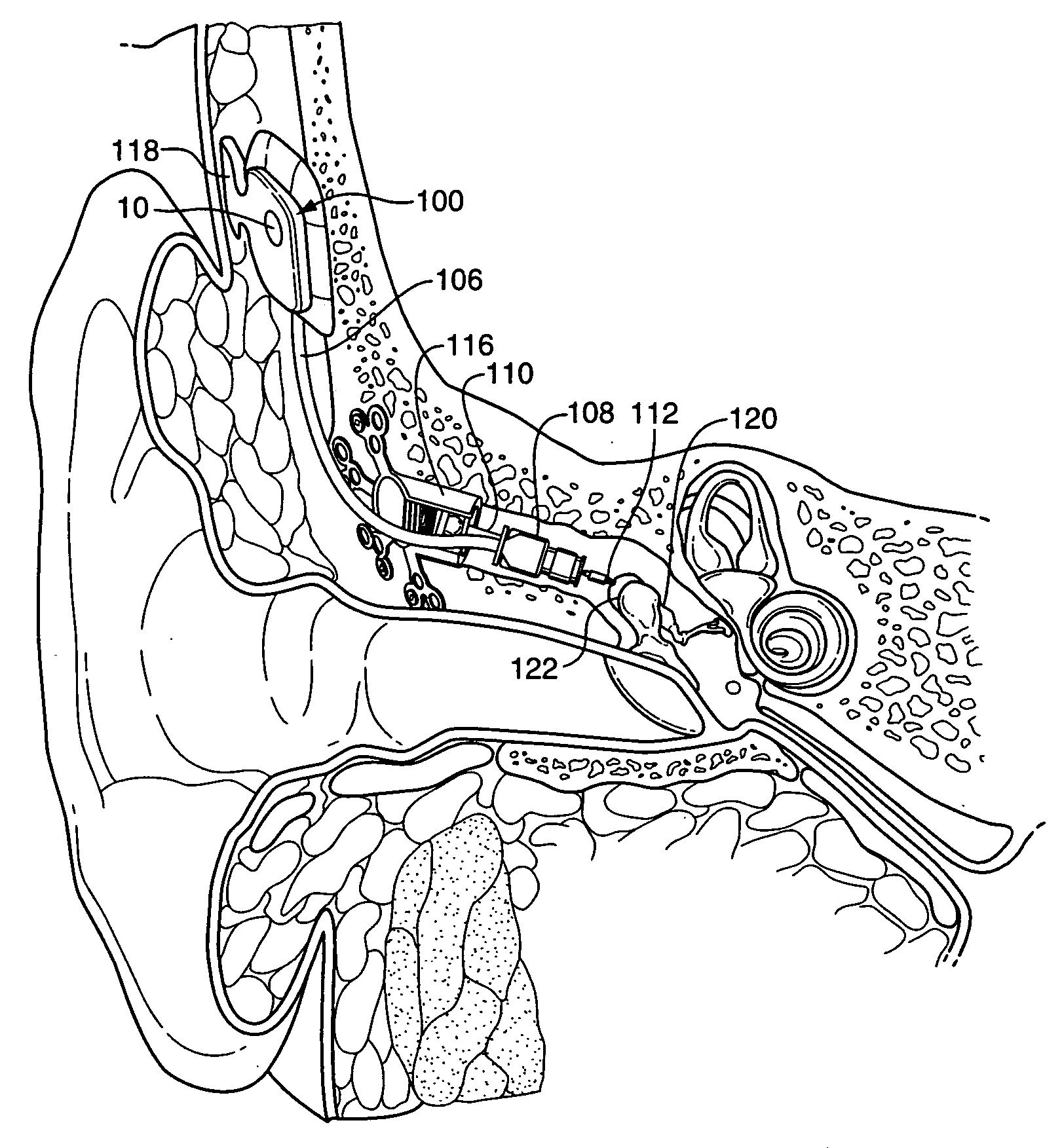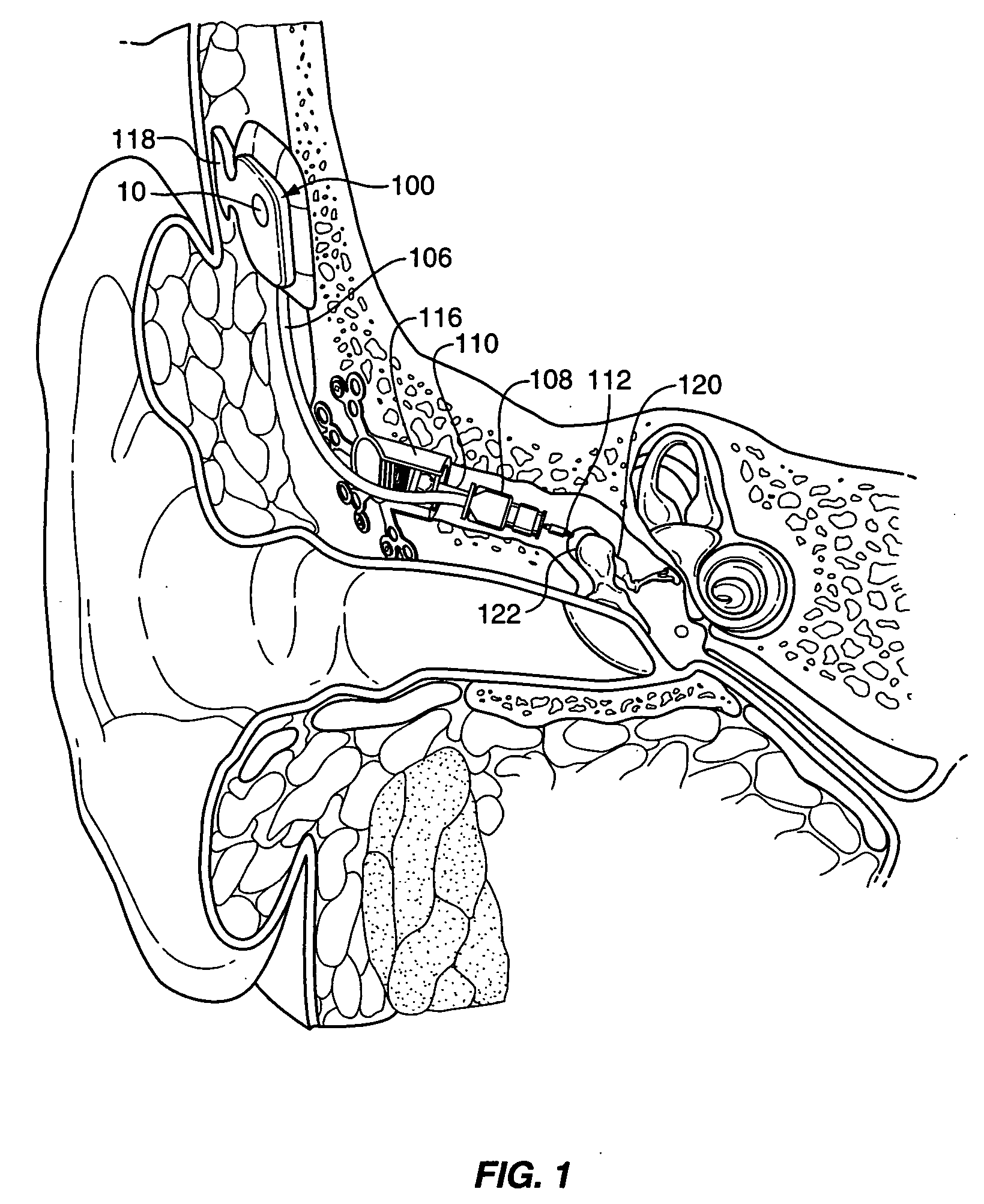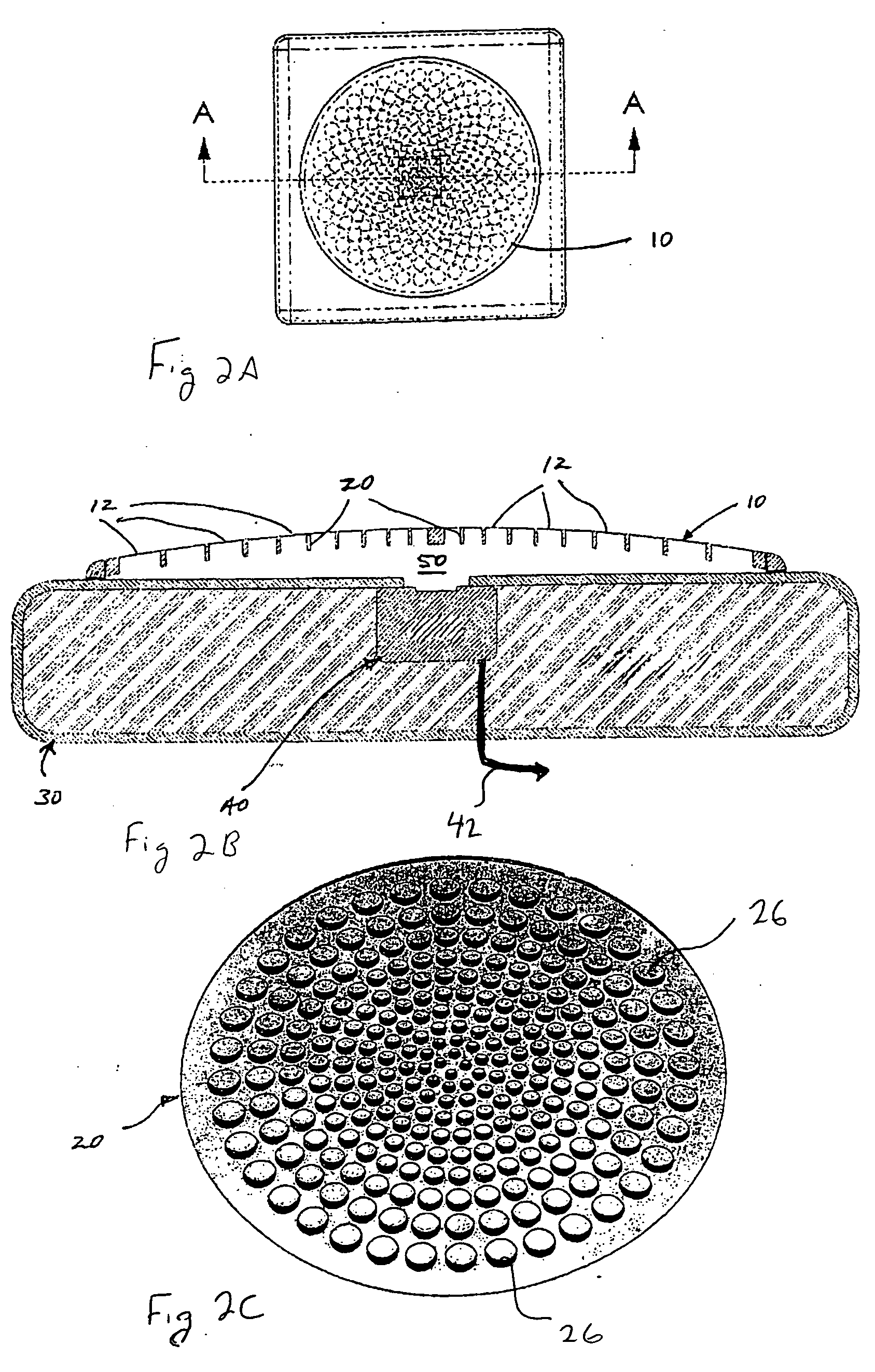Microphone optimized for implant use
a microphone and implant technology, applied in the direction of electrical apparatus casings/cabinets/drawers, therapy, physical therapy, etc., can solve the problems of reducing absolute acoustic sensitivity and increasing the noise floor of the input-referred microphone, so as to reduce the ratio of vibration sensitivity to sound sensitivity, increase the sensitivity of the microphone diaphragm, and increase the effect of vibration sensitivity
- Summary
- Abstract
- Description
- Claims
- Application Information
AI Technical Summary
Benefits of technology
Problems solved by technology
Method used
Image
Examples
first embodiment
[0040] In a first embodiment, a plurality of individual diaphragm elements are disposed relative to a common chamber that allows for acoustically summing the output of the individual diaphragm elements. In one arrangement of the acoustic summing embodiment shown in FIGS. 2A-2D, a large primary diaphragm 10 of the microphone assembly is subdivided into multiple smaller diaphragm elements 12 by placing a grid-like, rigid or semi-rigid, support structure 20 having a plurality of apertures 26 in contact relation with the diaphragm 10.
[0041] As shown in FIG. 2D, the diaphragm 10, which is formed from a single membrane, may be tensioned over the curved outside surface of the support structure 20.
[0042] Once tensioned over the support structure 20, a retaining ring 22 may clamp the diaphragm 10 and support structure to the housing 30. The diaphragm 10 may be tensioned across each aperture 26 such that the resulting diaphragm elements 12 are operative to vibrate in response to received aco...
second embodiment
[0050] In the present invention, the output signals of a plurality of small diaphragm elements are electronically summed. As shown in FIG. 5 plurality of individual diaphragm elements 90 are juxtaposed relative to a corresponding plurality of microphone transducers 40. The output of each microphone transducer 40 is electronically summed by a summation circuit 60. That is, the summation circuit 60 combines the outputs from the transducers 40. Accordingly, the output signals generated by each of these transducers 40 may be combined to generate a composite output signal, the responsive sum of which will have an adequate acoustic sensitivity for hearing purposes.
[0051] The plurality of individual diaphragm elements 90 and corresponding transducers may be individual units (e.g., separate microphones) or may share one or more structures. For instance, the plurality of diaphragm elements may be formed into an integrated structure as discussed above, or share a common diaphragm.
[0052]FIG. ...
PUM
 Login to View More
Login to View More Abstract
Description
Claims
Application Information
 Login to View More
Login to View More - R&D
- Intellectual Property
- Life Sciences
- Materials
- Tech Scout
- Unparalleled Data Quality
- Higher Quality Content
- 60% Fewer Hallucinations
Browse by: Latest US Patents, China's latest patents, Technical Efficacy Thesaurus, Application Domain, Technology Topic, Popular Technical Reports.
© 2025 PatSnap. All rights reserved.Legal|Privacy policy|Modern Slavery Act Transparency Statement|Sitemap|About US| Contact US: help@patsnap.com



